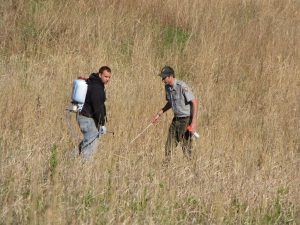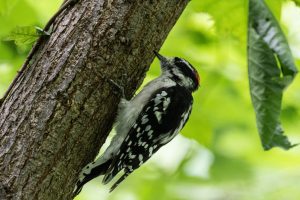5.3 Control Measures
Controlling the spread of invasive species requires a combination of public awareness, preventative measures, and active management strategies.
Public education campaigns can inform people about the dangers of invasive species and the common man-made pathways that allow them to spread. There are many ways the public can adjust their own actions to prevent inadvertently spreading invasive species:
- Be aware of border regulations and declare what you are travelling with so that inadmissible goods can be disposed of properly.
- Clean and dry boats and equipment before moving them between locations.
- Always buy and burn local firewood.
- Plant native species in your own yard, and never plant invasive species. Refer to the Grow Me Instead guide for plant recommendations that help to combat climate change and biodiversity loss.
- Never release unwanted pets into the wild.
- Spread awareness about invasive species and how your individual actions can help!
Early detection and rapid response are crucial for preventing invasives from becoming established. Community Science plays an important role in being able to detect and report new invasive species sightings so that control methods can begin.
Control measures can be broken into three categories:
1. Mechanical Methods
Include manual methods such as cutting, pulling, mowing, girding, and solarization (smothering vegetation with plastic to kill it) for invasive plants. Egg mass removals are common to try to prevent the spread of some invasive insects.
Mechanical methods require significant amounts of manual labour, so it is a good way for the public to get involved to help! In London, you can attend events to help remove invasive plants like garlic mustard and common buckthorn.

2. Chemical Treatments
This involves the use of herbicides and pesticides. These chemicals must be applied in accordance with federal and provincial regulations.
3. Biological Controls

Introducing natural predators or pathogens (e.g. insects, fungi, bacteria, viruses) to stop or slow the spread of invasive species. Careful consideration must be taken to ensure that the biological control agent does not in itself become a pest. Agents for biological control must be approved by federal and provincial authorities before release.
By combining all of these efforts, we can reduce the impact of invasive species and protect native biodiversity.

